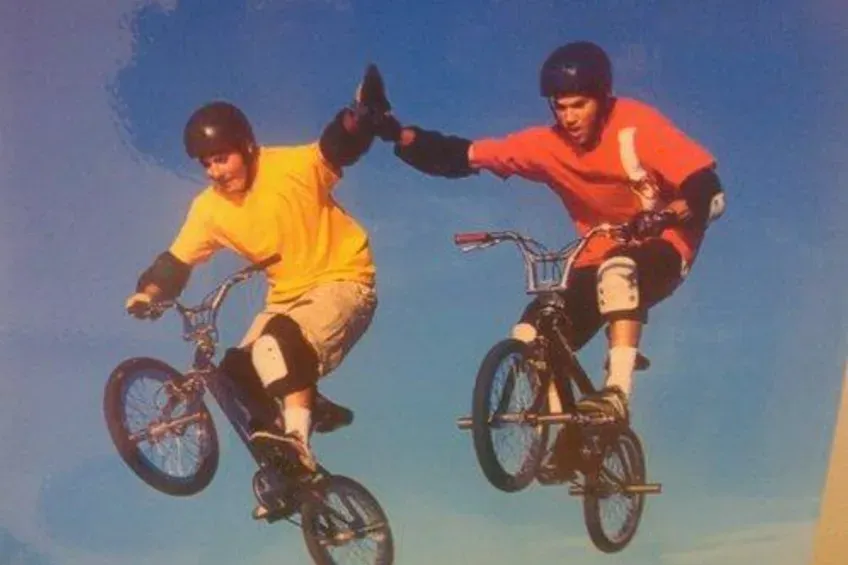Pumpkin Pie Forever
My dog died. Last Thursday, Johanna took Pumpkin Pie to the vet for a check-up on Pump's chronic kidney disease, and was told our sweet dog probably had less than a year of living left. On Friday, some test results from the previous day's visit came back and things were worse than had been apparent. On Saturday morning, our incredible behaviorist, Dr. Shana Gilbert-Gregory, came to our home and euthanized Pumpkin. I mourned and will continue to mourn Pump, but the process was profound-- as sad as anything I'd ever experienced but also truly peaceful.
We adopted Pumpkin on August 24, 2019, when the shelter guessed she was between 2 and 4 years old. It meant more to me than I can express that we had Pumpkin for over 4 years, that we got to the other side of the outside guess and could know she had spent more of her life safe and happy than she had spent it abused. Four years isn't that much time. We had hoped to get at least a decade with her. But this was 6 or 7 months before the pandemic hit, which means we spent every day inside with that dog. In mid-2021, we drove across the country, from Philly to California and back, with Pumpkin. My wife gave birth to our son in 2022 and Pumpkin, whose separation anxiety and curiosity had her howling outside our baby's door for weeks, grew to be gentle and protective of him. These were four of the most impactful years of my life. These did not pass as normal years.
While on that road trip, I was given a prompt for a project I don't want to talk too much about (not trying to be mysterious, I just don't want to blow up anybody's spot if it moves forward). I was given a standard advice question and told to answer it using lessons learned from a movie and my editors gave me a question about taking care of a dog, probably because I never shut up about how much I loved Pumpkin. That's what follows: the question I was given and the essay I wrote in response. I think it's fun, though that Christmas Carol reference in the third paragraph is definitely recycled from an old thing I wrote about Jetsons: The Movie, of all films. There’s so much melodrama in the line that it’s fun to drop it into dumb contexts. The film comparison is flawed in that Pumpkin was and is one of my best friends, and I emphasized the negative to impress some of the gravity of responsibility on a fake child, but the good so easily outpaced the challenging that there’s no question for me— you should adopt and care for a dog. I'm sharing this now, with permission from the original editors, as a tribute to Pumpkin Pie. We love you, Pump.
All of the pictures, except for the one that obviously isn’t, are from the road trip. It was one of the happiest times of my life.
Q: My child is desperate to have a dog. How can I make them understand how much responsibility that is?
A: This is an interesting question, and one that I had trouble finding a movie for because, and I recognize how wildly pretentious this sounds, you're sort of asking me how to teach a person to love.
There are plenty of great movies about dogs, but I don't know that any of them properly communicate responsibility. Dogs are goofy, loyal sidekicks or they're cartoon heroes or they cover their eyes with their paws and shake their heads when a human in a romcom says something awkward. I could point you toward Actual Genius Kelly Reichardt's Wendy and Lucy, a perfect film about the relationship between a person and a dog, but you're trying to help a child. Wendy and Lucy makes me cry and I'm not about to ask you to sit an adolescent down for 80 minutes of emotions too complicated for most adults (read: me). We're going to have to come at this sideways. Let's talk about Bedknobs and Broomsticks.
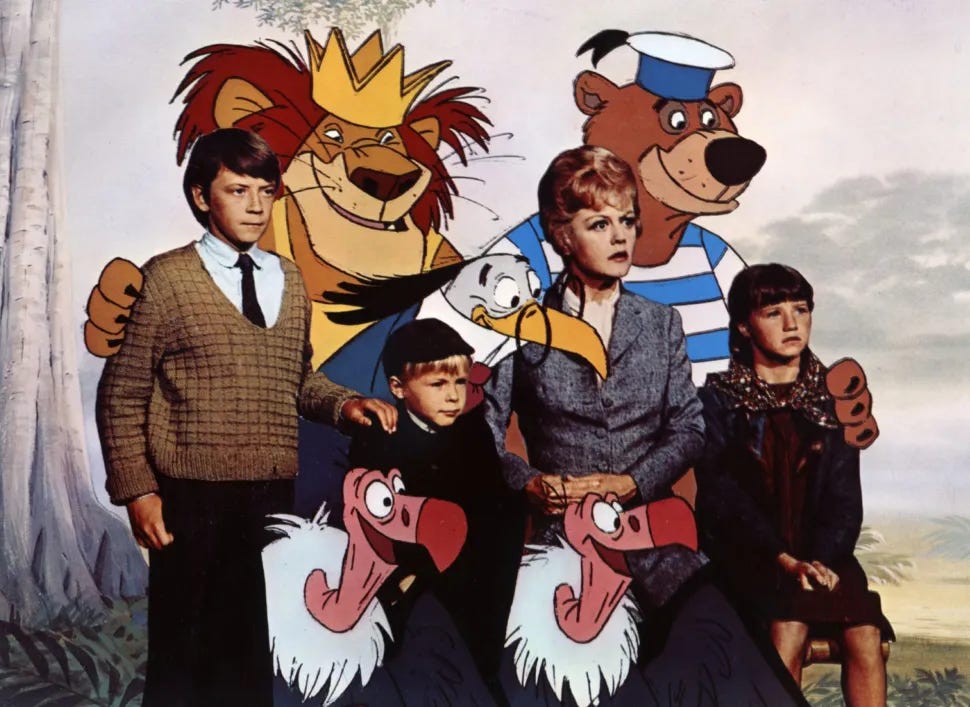
Walt Disney was dead: to begin with. There is no doubt whatever about that. For as many dozens of legendary talents as Walt Disney Productions had at its disposal, it had lost its driving force in 1966 and was struggling to move forward. Walt was the one who decided feature-length animation was a viable medium, and then, a couple decades later, he was the one who took all the animators who worked on those films and had them design theme park rides. He made dramatic decisions that paid off, and when he died, everybody looked blankly at each other, wondering what to do. Walt’s absence defines at least two decades of Disney history.
Whatever the merits of Disney's tentpole animated features of the time-- and I have a lot of love for movies like Robin Hood-- it was a rough period. Directors leaned on old tropes and animators shamelessly recycled their work. There are sequences in 1967's The Jungle Book that show up verbatim in 1970's The Aristocats. This was the era in which Don Bluth would fulfill a lifelong dream by joining Disney, only to realize all the idea people were long gone and that the only way to make anything he cared about was to convince a bunch of artists to leave and start a competing studio. Bedknobs and Broomsticks came out in 1971, and for an idea of where it falls in the Disney filmography, we can look at the other three films the studio released that year: The Barefoot Executive, Scandalous John and The Million Dollar Duck. I could throw in a fake name and you'd think, "Yes, I may have seen The Booksmart Koala at 3am on The Disney Channel back in the late 90s."
The short version of Bedknobs is nearly 2 hours long. The restored version, saved 20 years later when a Disney executive started asking why his favorite song on the film's soundtrack wasn't in the actual movie, adds 21 minutes of music and needless subplots. In both cuts, the opening credits promise a truly bonkers adventure. A big Sherman Brothers melody rings out over still images of Nazi submarines and floating suits of armor. Everything's presented in the style of the Bayeux Tapestry. There's a bagpipe interlude. There's so much promise here, so many different directions the movie telegraphs it will go.
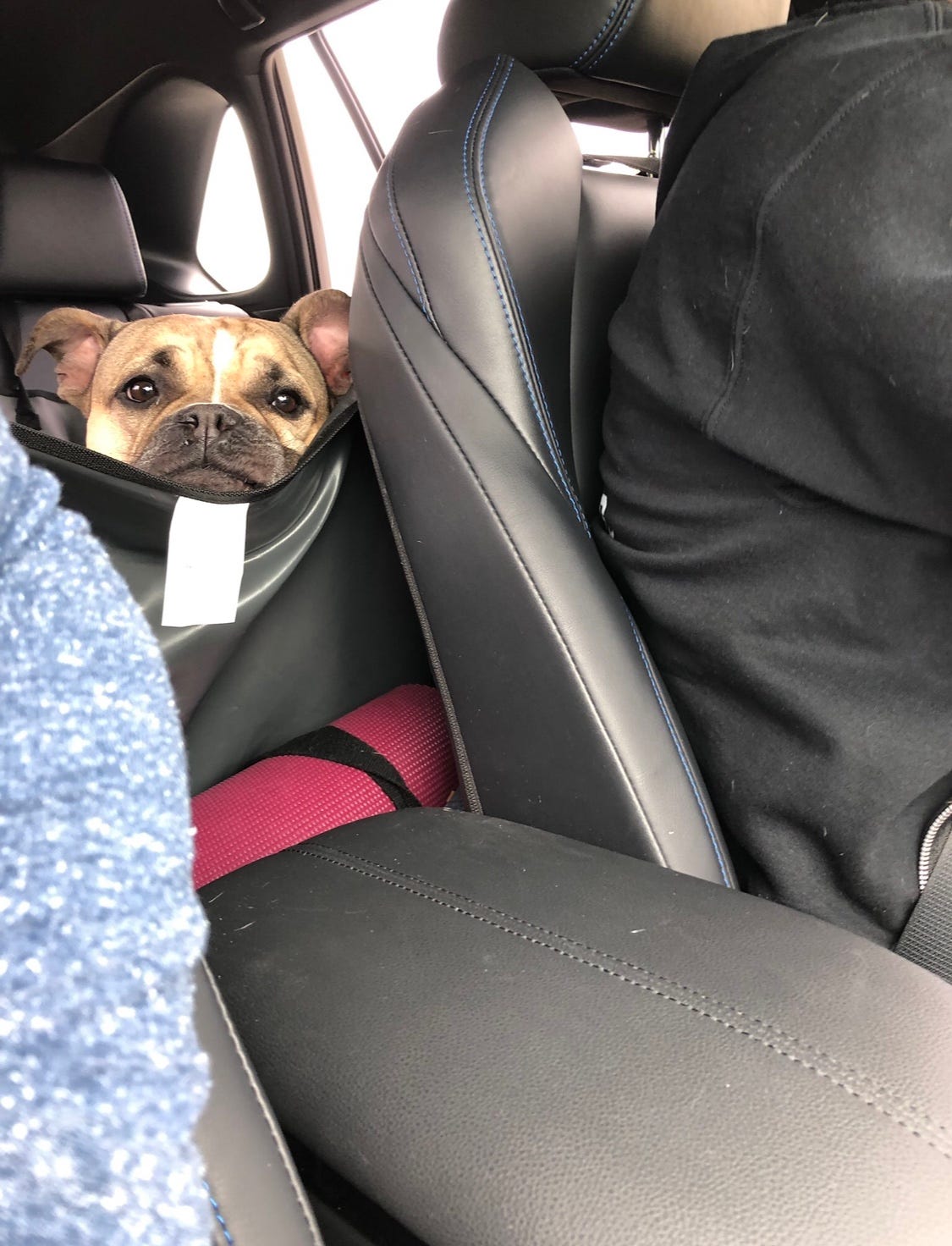
Bedknobs had been in preliminary stages of development on and off since the early 60s as a contingency plan if Mary Poppins' famously prickly author, P.L. Travers, backed out and refused to let Disney adapt her novels. It was always the second choice, only as much of a concern as it needed to be to make sure there would be somewhere to pour all the Mary Poppins work into if the first choice fell through. There's enchantment here and you get to see humans dance with cartoon characters if that’s exciting to you, but it's clear all the best ideas had already been used.
This is a movie where Angela Lansbury studies witchcraft via correspondence course and the scene where she learns to fly is something like ten minutes of stiff physical comedy. It's a reverse Mary Poppins, in that the magical caretaker is full of curiosity and playfulness and the children she guides through the world are little sticks in the mud. The kids are written to be deeply unpleasant, jaded pre-teens; Lansbury's first big musical number is called "The Age of Not Believing," as in "I'm going to tell you, in song, that you're too boring to have imaginations." Bedknobs' plot doesn't start in earnest for 45 minutes, primarily because the three kids refuse to let Lansbury have any fun. The children find out the person they live with has magical powers and decide the best thing to do with this information would be to blackmail her. We're so far removed from the goofiness of The Absent-Minded Professor or the wonder of Darby O'Gill and the Little People. We have been stranded in 1971, and everybody kind of sucks.
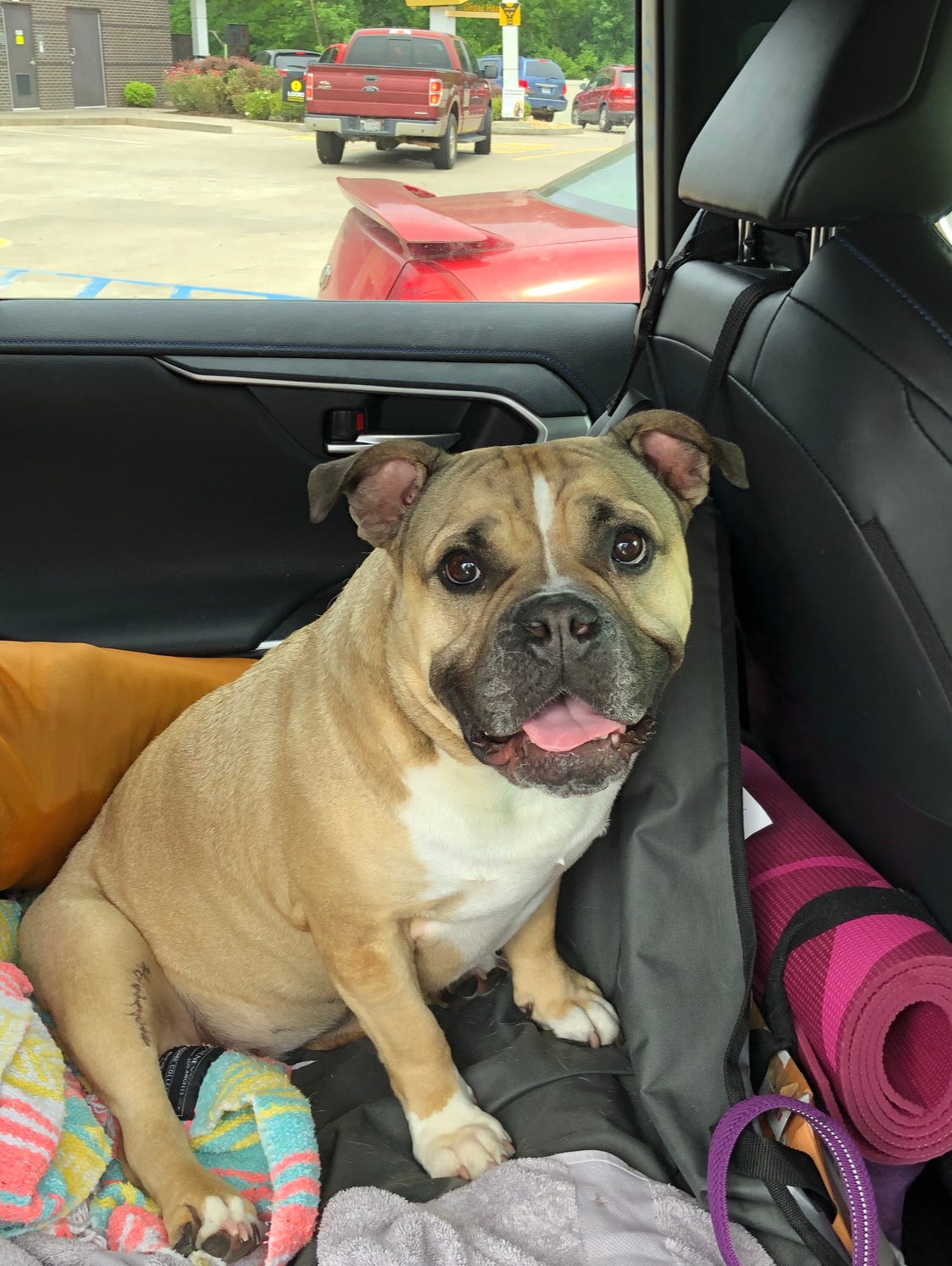
And then, at almost an hour into the movie, our protagonists teleport to the fictional island of Naboombu. We're on a dirty street transformed by British austerity and two minutes later we're in a fish nightclub at the bottom of a lagoon that the film's human characters had read about in a picture book. Finally, the animation promised on the film's poster is here. Finally, the color palette brightens up. This is the Mary Blair influence. This is a world you'd want to spend time in. A cartoon soccer match breaks out between subjects of a lion king's court. The old Goofy "Wa-ha-ha-hoo-oo-ee" yell erupts from a hyena in gym shorts. Legendary animator Ward Kimball, one of Disney’s “Nine Old Men,” took the reins for the animated section and directed it like he had to fit a film’s worth of action into a short. Kimball had been the man behind Alice’s in Wonderland’s Mad Tea Party and is thought to be solely responsible for spreading the rumor that Walt Disney had been cryogenically frozen just before dying. He was a nut who had a hand in all of Disney’s best films, feature-length and otherwise, and it’s a pleasure to get kicked into his brain for a couple scenes. It doesn’t last. Twenty minutes later, we're back in a poorly-lit house in the real world.
The rest of Bedknobs is a long, dry lead-up to a slapstick bonanza. After some shoe puppetry that could only excite the kind of person who would have run from a theater screaming about an oncoming train, Angela Lansbury enchants old suits of armor and enlists them in a fight against invading Nazis. Of course a studio full of smart, creative people couldn't help but find a way to sell the big climactic battle between sentient swords and history's greatest monsters. This is what's been promised since the opening credits, and it's still wonderful, even when strings catch the light or a piece of horse armor glides in front of what's clearly a green screen. There has been a slog and then a payoff, a slog and a payoff and then the film finally ends, and you check the time and think “How has it only been two hours? I feel like I just watched the Dekalog.”

So, dogs. A brief personal history: My family first got a dog, a little Chihuahua named Lili, when I was in high school. Like most dogs of her size, Lili was fiercely loyal to her family and afraid of everything else. Still, she was crate-trained and knew not to poop and pee inside. I loved Lili and, even at 30, naively thought all dogs would require roughly the same level of commitment.
In 2019, my partner and I were ready to adopt a dog. We had bought a house and, for the first time in the five years we had lived together, had the space and freedom from landlords required to take care of a pet. We met two beautiful dogs at Philadelphia’s PAWS adoption center, both named after desserts. There was the sedate collie mix Brownie and there was Pumpkin Pie, an American bulldog/pitbull who cannonballed into my lap the second she was let into our meeting room. We left with Pump, who fell asleep in lap on the ride home, her Elizabethan collar scraping against my knee, her snores reaching black metal concert decibel levels. She was happy to be on a person and I was already attached enough to want to yell at whoever had mistreated and abandoned her.
I still love when Pumpkin takes a nap on me. More than that, two years later, I love when she takes a nap on the other side of the room. When we first brought her home, she drank every drop of water we gave her because she had been conditioned to go long periods of time without getting anything. She thought she had to go overboard to prepare for an inevitable drought. Where Lili had found security in her crate, Pumpkin was terrified of hers. When we tried to put her in one, she’d freak out and bite the bars until they warped. Worse, she peed in her crate, which our behaviorist would explain only happened if dogs were used to being locked up and left alone for way too long. They don’t want to pee where they sleep, but they’ll do it if they’re pretty sure they aren’t going anywhere for a while and the only other option is pain. She would poop inside the house because she didn’t expect to be taken outside, and then she’d eat her own waste because she had probably been yelled at and worse by her old owners for creating a mess. She knew it was wrong but she didn’t know what to do about it, so she did what she could to hide any evidence she’d been a “bad dog.”
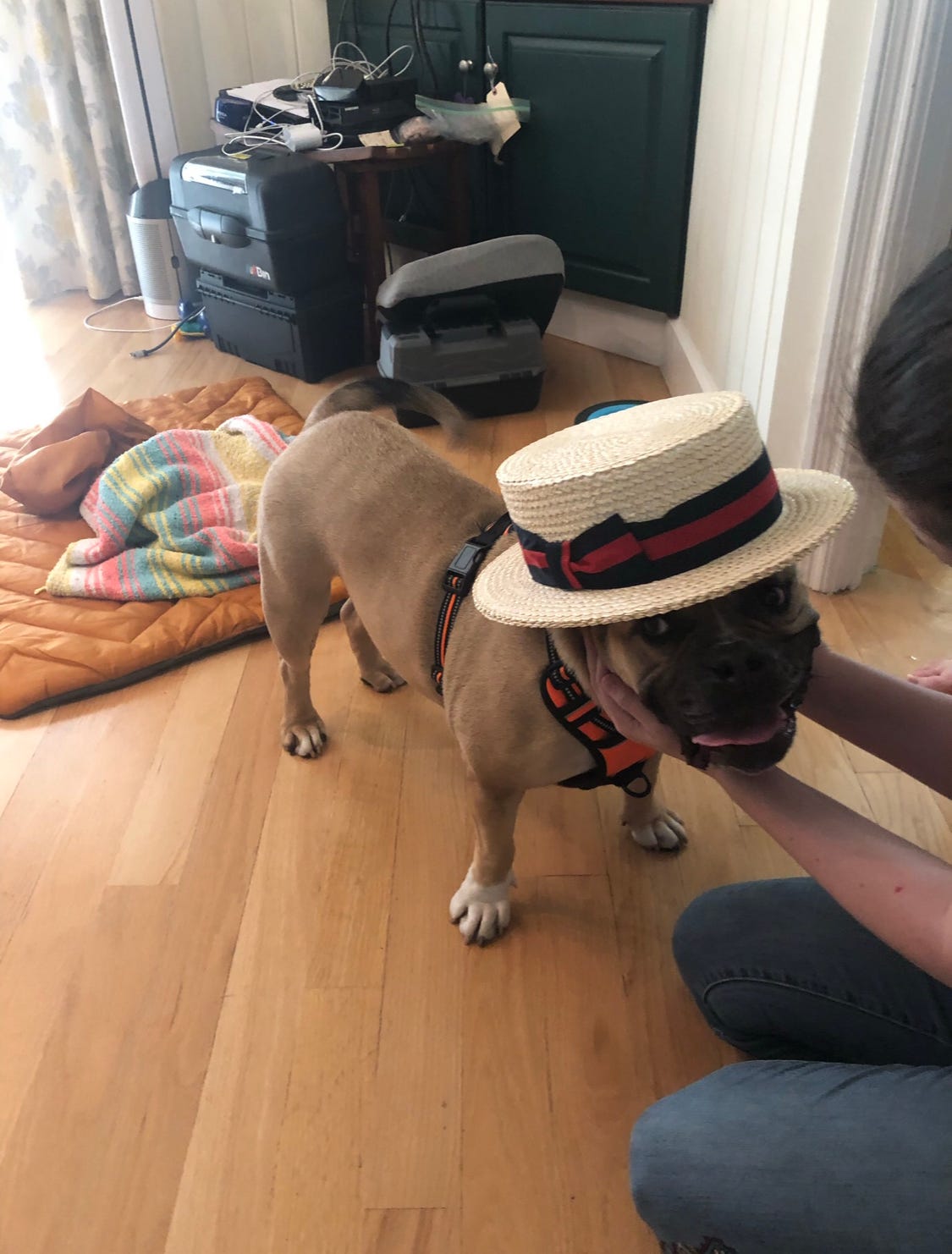
When Pump sleeps on my legs, she’s saying she feels safe with me. She knows I won’t hurt her. When she sleeps on the other side of the room, she’s saying she feels so safe that she knows I’m not going to get up and run away when she stops touching me. It took a while, but her instincts no longer tell her home is temporary. I’ve spent the past two years convincing her that she won’t suffer if I’m out of sight. It’s one of the things I’m happiest about in my life.
Getting there took work. More than that, it took persistence. I cleaned dog pee and poop off the floor multiple times a day for months. When we adopted Pumpkin at 2-4 years old, her behaviors were set, and no amount of frustration I felt was going to convey that biting is bad. I had to take the teeth, give a performative yelp so she knew she had hurt me and hope it wouldn’t happen again. Her tendencies were probative of a terrible few years, but I’d be a lesser person if I held them against her.
And she continues to reveal the ways her past trauma informs her present: after being isolated for so long, she has attachment issues. On a recent road trip across the country, those manifested in her trying to climb from the backseat into the driver’s lap, and she barked piercingly when we blocked her from doing that. She’s 55 pounds and was unwittingly attempting to send us into a ditch. We can’t indulge her desire to lick our faces on an eight-hour drive through states we’ve never traveled through. At the end of the first day, with thirty more to go, half deaf and entirely fried, I responded to my mother’s friendly “How’s it going?” text with “I will never do this again.”
My frustration tolerance is low. The dog can snap it in two. I forget she only wants to be near me. It’s an innocent, affectionate impulse that I took hard. Within an hour, I realized how childish my text was. I was and am ashamed to have taken a day’s exhaustion as a contract guaranteeing a month’s misery. I could have indulged the feeling and moved on, but Pump had pushed me so far that I let myself sit in it, and by doing that I made other people worry for me. But Pump doesn’t know she’s doing anything wrong when she pushes me. When I’m doing the dishes or walking a letter to the mailbox, idly thinking, the memories that pop up and make me wince are the times I was dealing with other stress and was curt with my partner or was going through something and didn't want to talk to anybody, so I responded to a stranger's question with a dismissive shrug. The things I most regret are times I casually lacked empathy because I didn’t think for a second about compartmentalizing how uncomfortable I was. Pump can get me there, but it’s unintentional, so it’s on me to be a human being who can process his emotions.
Your child may have some idea of the work ahead. They know they have to feed and walk a dog and sometimes help load the dog into the car for a vet appointment. Maybe a sitcom has shown them a dog acting weird, only to reveal the dog was pregnant the whole time. I don’t think this is the responsibility you need to convey to a kid. In my time with each of my dogs, the things I’ve had to work on and the failures that have cratered my heart have all revolved around my responsibility to not feel like giving up. The time it takes to bathe a dog is negligible. The test is the persistence it takes to keep helping the dog into the tub after she bites at you and runs away.
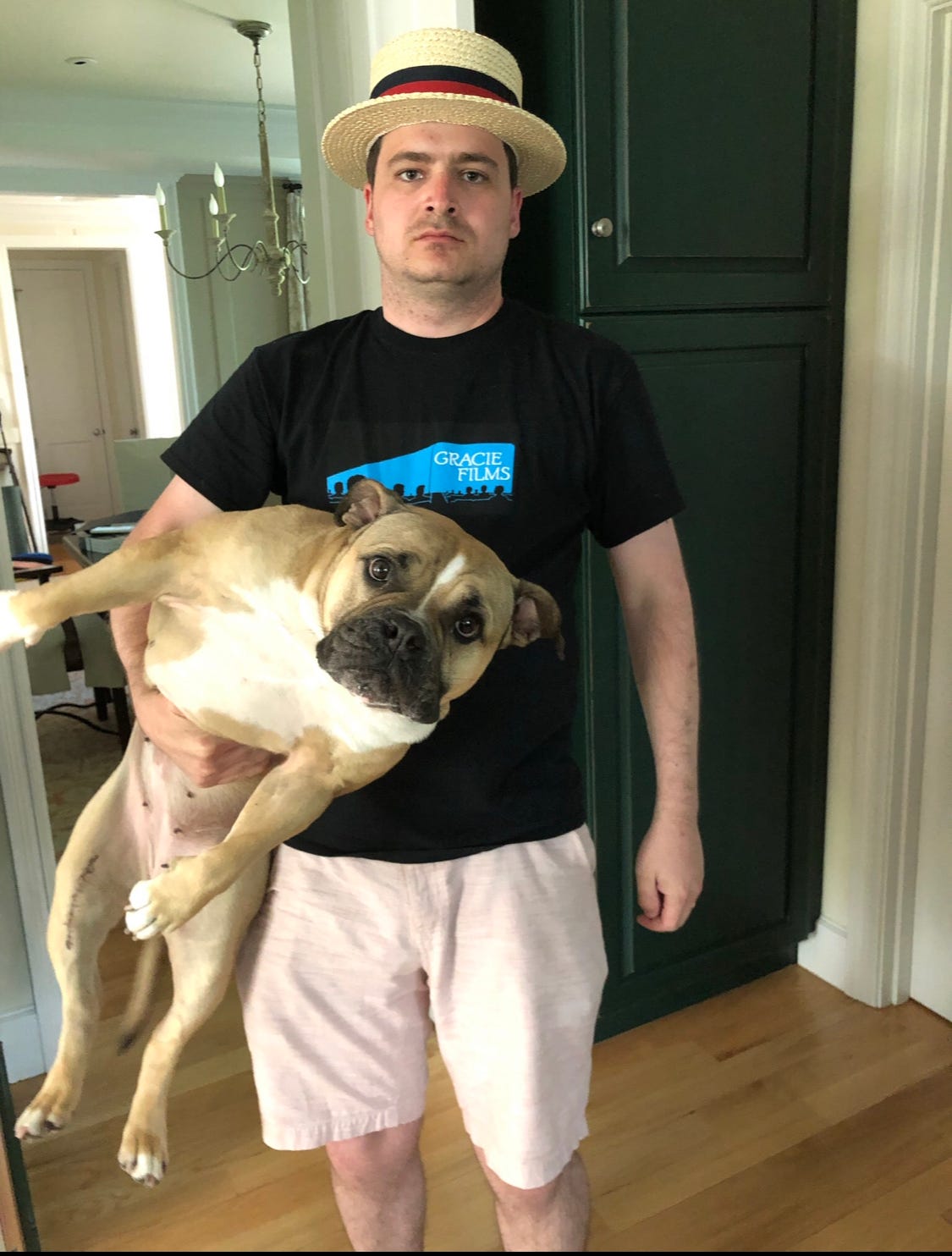
It’s worth underlining here that I work at nonprofits and produce small films. I could never be considered an expert, so I spoke with Dr. Robert Mankowski to make sure I wasn’t setting you up for disappointment. Dr. Mankowski co-owns Mount Laurel Animal Hospital in New Jersey, where I’ve taken Pumpkin for behavior help and a leg surgery. It’s a stunning facility surrounded by the kind of farm the word “tranquil” can’t properly describe. It’s Farm: The Farm, an ideal space. In his personal life, farm animals aside, he and his family have three dogs and a cat, all rescues.
Dr. Mankowski immediately pointed out an aspect of a dog owner’s responsibility I hadn’t considered: You have to socialize your dog and you have to have the proper amount of time in the day to tend to its emotions. “The mental and social needs of these animals need care,” he said. As we spoke, his daughter was pushing for the Mankowskis to adopt another dog. “One of the big things I said to the kids was that I didn’t want a fourth dog because it would take away from what we can give to each of the dogs we already have.” I’ve been describing the actions you need to take when a dog acts up or needs food. I haven't been accounting for the other 23 hours in the day, when I hang out and knead Pumpkin's neck while reading to create a space where she doesn't have to sit alone.
I asked if there’s any time he would flat-out say a person shouldn’t adopt a dog. Dr. Mankowski thought for a second and broke my heart: “The only time I would flat-out say a person shouldn’t get a dog is if they aren’t willing to commit to the needs of this animal, which are physical, social and financial.” ‘Financial’ doesn’t mean you need to be rich, it means you need to have priorities. “I see folks who are broke but put their pet’s needs above their own, and they are so committed to that pet. And then you have folks who pull up in a fancy car and have $2,000 cell phones in their pocket and aren’t ready. I had a guy who, with his kid in the room, found out his cat needed $2,000 to fix a urinary obstruction and he said it was too much money and that we should put the cat down. And this guy’s driving away in a BMW. He could have made it work. That guy shouldn’t have a pet.”
Dr. Mankowski said he’s never regretted adopting a dog, but admitted “there are certain moments when things are going wrong and you wished… But when you take a hard look and settle down, there’s no question.” For as far as I’ve gone here, he goes further: “Dogs are the best species on the planet. They’re the best animal on the planet, including humans. To care for one of them, as far as my life as a veterinarian goes, is an honor. It’s important for us to let people know what they’re getting into but also to know the rewards. I explain to people— why suffer and go through life without an animal? I would ask people not to be deterred by all of the stuff that comes up, because the benefit far outweighs the worst of it.”
This is all wildly variable, not only between different dogs but between the phases of each dog’s life. “As the animal gets older,” Dr. Mankowski points out, “the needs generally change, especially in their senior years. Everybody sees a puppy, and it’s so cute, and then how big is it going to get?” One of his rescues was 25 pounds and quickly grew to 50. “And you don’t just say ‘That’s not what I was expecting so I’m going to give you away,’” he insists. “This is a lifelong commitment.”
As we were talking, we did what all dog owners do and started trading stories. I confided the most frustrating thing Pumpkin’s ever done by a mile, when I came home from work to find she had torn up and eaten half of a couch. She was thrilled with herself and to see her owners, though, and rolled over on her back for some rubs. My partner has this all on video.
“What is life without some spice?” Dr. Mankowski asks. “You’ve got this crazy story. ‘Your dog ate what?’ You go through life and, in the long run, big deal. That was a blip compared to all of the great stuff.” He’s right, of course. In an alternate reality, I didn’t adopt Pumpkin. I got home from work and watched TV that day. Right now, I’m much happier with the story of my dog eating the couch than I am with a memory of squeezing in a few more hours of paying half-attention to some background filler.
I don’t think you can pull any morals on caring for a dog from Bedknobs and Broomsticks. That’s a Mad Libs sentence. If you lived in a Dogtooth house that only had access to that one movie and Bedknobs was the only thing you had ever seen, you still wouldn’t be able to make that argument. What I believe, though, is that Bedknobs and Broomsticks is a very long movie that is mostly not very good. And then it is sublime. And I would not get 20 minutes of animation or empty suits of armor fighting off Nazis if I did not sit through the parts of the movie that are bafflingly terrible. The movie misses more than it connects, but you don’t get the good parts unless you watch the dull ones.
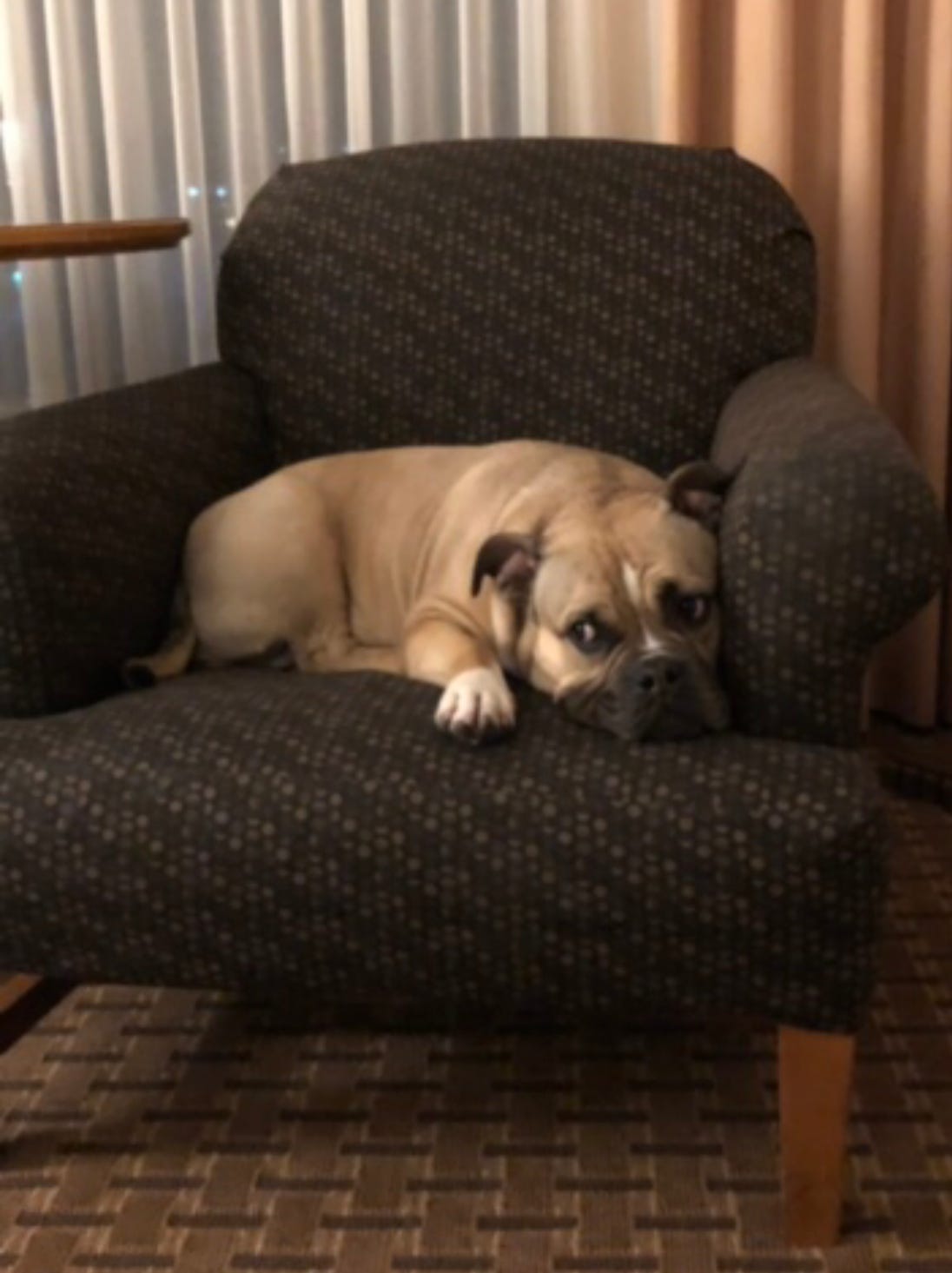
I would ask you to sit your child down with Bedknobs and Broomsticks— you can go with the extended edit if they’ve been bratty that day— and show them that the best cartoon that the best feature animation studio ever made is tucked one hour into a live action film about the most tedious children of all time. It’s an endurance test with more bad than good. But movies don't get much better than the good stretches.
I didn’t drive across the country on an arbitrary White Person Discovers What America Even Means trip, by the way. I’m from the Bay Area but have lived in Philly for seven years. In that time, my father was diagnosed with terminal cancer, and after COVID-19 hit, I hadn’t seen my parents in almost two years. I was not going to get on a plane and visit him, with his compromised immune system, until we were both vaccinated. I never thought I’d go more than a year without seeing my family, but there I was. It had been so long since I was able to visit home that most of the people I love hadn’t met Pumpkin outside of video chats. They loved her, but she couldn’t smell them, so they didn’t exist.
After everybody in my family got their shots, my partner and I planned the trip to California, and after small detours and eleven days in a car, we made it home. Pumpkin loved my parents and sisters. Their joy, the specific kind you get from a dog’s affection, brought me to a better place than I had been in years. That’s the bargain Pump and I made when she first jumped on me at the shelter: if I take care of her, if I allow her a generous grace period to re-adapt to a world that has abused her, she’ll grant me some of the best moments of my life. I don’t get to watch my dad rub her belly without first struggling to keep Pumpkin in the backseat as she barks in my ear for six hours. It’s hard to make anybody understand that, and maybe your child won’t. Maybe they’ll pretend they do and then take the lows of dog ownership like a tidal wave to the chest once you’ve adopted an excited, nervous animal they thought they were ready for. There’s really no telling. You just have to remember Angela Lansbury only gets pushed around by those snotty garbage pail kids for the first hour, and then the fun starts.

